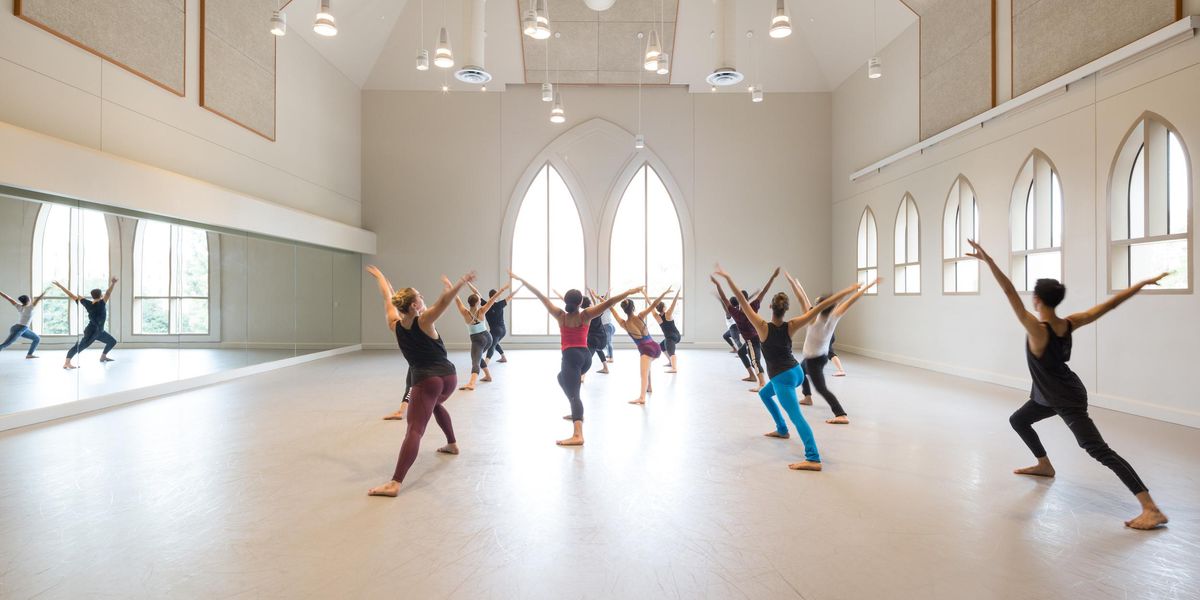On the Rise: Victor Quijada
This director/choreographer/dancer mixes hip hop with concert dance, with electrifying effects.
A marvel of speed, precision, and invention, Victor Quijada is riveting as a performer. His movements coil tight and strong in the solar plexus, leaving the upper back and limbs free. As artistic director/choreographer of Montreal’s Rubber-bandance Group, he mixes hip hop with contemporary and classical dance in a speedy, über-physical hybrid that blends easy elegance with male-female confrontations that threaten to become pileups. When he’s finished, the audience is whooping.
Quijada’s movement is exhilarating and his charisma is magnetic. Juxtaposing the raw freedom of popping with concert dance’s technique and narrative, Quijada’s pieces have unexpected moments of tenderness and humor. But not everything about Rubberbandance Group works perfectly, yet. Quijada is a man with conflicting street-to-ballet impulses and he is still the best interpreter of his own ideas, so he continues to seek fresh ways to teach his dancers. “The work that I’ve done has been cracking open the potential of fusing hip hop energy with contemporary aesthetics,” he says. Often, he uses classical music or commissions new scores to inspire his favorite theme—relationships.
Quijada’s contemporary dance and ballet credentials give him an unusual edge. A former Los Angeles B-boy, he took to the streets at the age of 8 and later challenged the status quo in clubs, festivals, or wherever break dancers met. After two years with the Rudy Perez Performance Ensemble in Los Angeles—Perez was a mentor and teacher—he joined Twyla Tharp Dance for three years and then, in 2000, relocated to Montreal to perform with Les Grands Ballets Canadiens de Montréal for two seasons.
His transition from street to studio was tough. Along the way, he discovered he was opinionated and undisciplined, as well as talented. He’d barely graduated from the Los Angeles County High School for the Arts when Tharp beckoned, launching his biggest learning experience to date. Since he was the only member of that company without ballet training, he had to educate body and mind—fast.
Quijada is accustomed to adjusting. He’s spent most of his 29 years tilting at tradition, first as the son of Mexican immigrants (his father is a foundry worker and his mother works in a factory). As he grew up, his need to dance meant sharing sidewalks with his neighborhood’s champion movers. Then he had to find his way as a B-boy among contemporary and ballet dancers, and as a classical dancer among break dancers. Stalked by a sense of never fitting in, he began appraising all forms of dance with a critical air. He assiduously searches out and watches dance performances of every variety. As with his own works, he is rarely satisfied. However, his quest sharpens his own creative purpose. “I was—and am—inspired by the lack of good dance,” he says boldly.
In 2002, he founded Montreal’s Rubberbandance Group with seven hip hop artists and ballet dancers. First experiments were awkward because neither set of dancers understood the other. Nevertheless they were so different that choreographer and company got instant attention from critics and public.
Quijada’s experiments won two United Kingdom awards the following year—the Peter Darrell and the Bonnie Bird awards for choreography. Rubberbandance has since appeared in festivals in Toronto, New York, Washington, Brussels, London, Helsinki, and Aichi, Japan. Quijada choreographs for film and television and an adaptation of Hasta La Proxima was nominated for the 2004 American Choreography Awards in the short film category. He has made pieces for Scottish Dance Theatre, New York’s Chamber Dance Project, and Peter Boal and Company.
Despite some success, one of Quijada’s challenges as a choreographer is finding crossover dancers who can perform his synthesis of styles. “I imagine having a company where there are teams of different kinds of dancers. Ten years from now I want the majority to be able to do everything as well as having a few specialists—breakers and ballet dancers,” says Quijada. Meanwhile, he tries every possible combination. Currently Rubberbandance numbers four (plus a part-timer, dancer Emmanuelle Le Phan) including Quijada, B-boy Joseph Aurelien, classically trained Alexandra Damiani, and lead dancer Anne Plamondon, who is also artistic coordinator.
Plamondon is the only dancer who has performed Quijada’s choreography in pointe shoes, but she forecasts that as dancers become accustomed to his style, he will integrate more pointe work into frenetic hip hop moves. “It’s really difficult. He’s speaking another language, a foreign language,” she says. Classically trained with professional experience at Holland’s Nederlands Dans Theater II and Portugal’s Ballet Gulbenkian, she still finds it difficult to give Quijada what he is looking for.“The movement comes out of the center of the body,” she says. “You must feel very compact. You must explode in the air using the upper back and neck instead of the legs to project yourself.”
Hardworking and critical, Quijada is in no hurry for success as he analyzes each new production for its weaknesses as well as its strengths. Ahead lie appearances at Jacob’s Pillow and the Canada Dance Festival in Ottawa next summer. “My path will probably be cyclical, as my training was,” he says.
Linde Howe-Beck is a Montreal-based dance writer who has been a
Dance Magazine contributor for 28 years.




